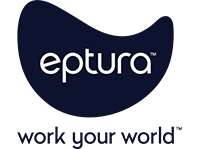
Enterprise-size organizations across industries are already seeing more people at their facilities, and the trend is set to grow. The number of visitors per location has already nearly doubled across all regions over the past three years, and 34% of companies now say they will increase the number of in-office days this year, according to Eptura’s 2025 Workplace Index report.
The report also reveals how facility and workplace professionals are preparing for the increasing demands on workspaces: 42% of organizations now see employee experience as a key area to drive value through digital transformation, with 77% planning to implement AI to into employee experience workflows in the next 12 months.
As companies focus on and invest in employee experience, we’re also seeing industry leaders call for new ways of understanding and approaching this critical topic.
Welcome to our monthly deep dive into the trends important to busy workplace and facility management (FM) professionals.
What is employee experience? And how has it changed over time?
In the past, the concept of employee experience was often limited to basic workplace conditions and compensation. Employers focused primarily on providing a safe environment, competitive salaries, and essential benefits. However, as the workforce has evolved, so too has the understanding of what truly drives employee satisfaction and productivity. Today, facility and workplace leaders recognize that employee experience encompasses a much broader spectrum, including physical workspace design, company culture, work-life balance, and opportunities for personal and professional growth. The shift in perspective has led to a more holistic approach to creating a positive and engaging work environment.
Over the years, technological advancements and changing workforce demographics have played significant roles in reshaping employee experience. The rise of remote and hybrid work models, for instance, has forced organizations to rethink their approach to collaboration and communication. Tools like video conferencing, project management software, and digital collaboration platforms have become essential in maintaining a connected and productive workforce. A growing emphasis on mental health and well-being has led to the implementation of wellness programs, flexible working hours, and other supportive policies. These changes not only enhance the overall employee experience but also contribute to higher retention rates and improved job satisfaction. Facility and workplace leaders who adapt to these evolving needs will be better positioned to attract and retain top talent in a competitive market.
What are the connections between employee experience and physical workspaces?
It’s hard to overemphasize the effects physical spaces have on employees. In fact, facility managers play a critical role in their overall health and wellbeing. In the episode “’Keep Reskilling’ – Leading Through Change and the Future of FM Innovation,” Lorri Rowlandson, senior vice president for strategy and innovation at BGIS in Toronto, quotes Joseph Allen from his book “Healthy Buildings”: “Facilities managers have more impact on your health and your doctors do.” In her own words, she explains, “We spend 90% of our time indoors now. And so indoor health is something that hasn’t been talked about enough.”
The physical workspace also plays a crucial role in supporting employee productivity. A well-designed environment can enhance focus, reduce stress, and foster collaboration. For example, providing a mix of quiet zones and collaborative spaces allows employees to choose settings that best suit their tasks and work styles. Ergonomic furniture and adjustable lighting can improve comfort and reduce physical strain, while plants and natural elements can boost mood and cognitive function. Minimizing clutter and maintaining a clean, organized space can help reduce distractions and promote a clear mind. By tailoring the physical workspace to meet the diverse needs of employees, organizations can create a more productive and engaging work environment.
This hasn’t always been the case, though, and for workplace and facility leaders, workplace innovation requires a shift in mindset from housing employees to enabling their best work, explains Jeff Frick of Menlo Creek Media in Workplace Innovator podcast episode “’Keep Going Forward’ – Exploring the Future of Work and the Physical Workplace.’
“Don’t assume what was was correct, right, or that we’re going to go back to. We’re just going to keep going forward, and I think what’s most important is to think of your constituents, the folks in the building, and to shift your mindset. It’s not how I can house them, but how I can help them create an environment where they deliver the best work of their lives,” he says.
Being successful here means being open to being wrong.
“I think the other piece is, you know, if you’re trying a bunch of things, some things are going to fail. So, I think you build around experiments that don’t go well, it’s going to encourage people to take more experiments and ultimately, it’s, it’s more people trying more things just as a rule of numbers is ultimately going to impact and create more innovations,” Frick says.
How can workplace leaders create the right mix of spaces for employees, including the neurodivergent?
Neurodivergence describes the natural variation in the human brain, encompassing a wide range of neurological conditions like autism and dyslexia. These conditions affect how individuals process information, interact with the world, and experience their environment. The concept of neurodivergence recognizes that these differences are not deficits but rather part of the natural diversity of human cognition. However, this diversity can present various challenges in the workplace, particularly in traditional office settings. For example, some neurodivergent individuals may struggle with sensory overload in noisy or brightly lit environments, while others might find it difficult to navigate social interactions or maintain focus in open-plan spaces. Understanding and accommodating these diverse challenges is essential for creating an inclusive and supportive workplace where all employees can thrive.
Neuroinclusivity is the practice of creating environments, systems, and cultures that are welcoming and accommodating to all individuals, regardless of their neurological differences. It involves recognizing and valuing the unique strengths and perspectives that neurodivergent individuals bring to the table, while also addressing the specific challenges they may face. A neuroinclusive workplace actively works to remove barriers and provide support, ensuring that everyone has equal opportunities to succeed and contribute.
In the Workplace Innovator episode “’Do Unto Others’ – Leading with Empathy, Understanding and Compassion as we Design Neuroinclusive Workplaces,” guest Kay Sargent dives deep into the topic, sharing insights from her new book on the topic, “Designing Neuroinclusive Workplaces: Advancing Sensory Processing and Cognitive Well-Being in the Built Environment.”
Creating spaces where everyone can thrive is more than just an abstract future goal. “This is a moral imperative,” Sargent says. “We believe the built environment has a huge impact on individuals, and when we do that well, it can have a positive impact, but if we aren’t really leaning into the science of design and doing it intelligently, it can have negative consequences.”
By intelligently, she means purposefully and comprehensively.
“… every decision we make — height, scale, color, texture, material — every single decision we make should be intentional, and far too often they’re not.”
But she doesn’t mean perfectly. Because many people don’t fully understand the issues and the options, they’ll make mistakes, she says. But it’s important to keep trying and re-examine common assumptions about what works best in different spaces.
Instead of expecting perfection, it makes more sense to focus on authenticity and understanding, both keys to creating inclusive environments
“I think so many people right now are looking for quick fixes, and they’re looking for trends and what everybody else is doing. And they are not thinking deeply enough about who they are,” Sargent says.
By fostering a culture of understanding and support, neuroinclusive environments not only benefit neurodivergent individuals but also enhance the overall well-being and productivity of the entire workforce.
Stay on top of the trends in intelligent worktech and facility management
Workplace and facility management are constantly evolving with new technologies, regulations, and best practices. Industry professionals always have something new to learn.
For more videos, podcasts, and webinars to keep you updated on the latest trends, visit Eptura’s resource page.






